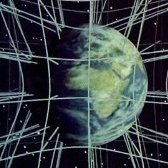Leaderboard
Popular Content
Showing content with the highest reputation on 06/03/18 in all areas
-
One of the tricks to realize is that the invariance of c has far reaching implications beyond the speed of light. It also relates to the maximal rate of information exchange between any two states. The speed of light is simply the most commonly known consequence of the maximal information exchange rate. This ties incredibly well to causality laws, and how one measures time in causality related interactions. As Hanke mentioned Minkowskii, under the Lorentz transforms constant velocity is used to match the laws of inertia. Acceleration itself is handled through rapidity which is a type of symmetry rotation. Studiot you mentioned the problem of bouncing between theories, this is a particular difficult endeavour if one doesn't pay close attention to the mathematical treatments in each theory. Far too often confusions arise simply from switching between metric coordinate systems ie classical to quantum to commoving under FRW. Its great to study every theory but one has to pay close attention that any theory is specific to the system state it is describing and how it describes those states. @Hanke its particularly nice having you back for me as your one of the few posters on this forum that can check my replies and answers (particularly when I'm describing gauge groups) so its nice to get that safety net back lol. I can and often do make mistakes so its good to have another set of eyes watching out for them2 points
-
You should start a new thread so we can decimate this asinine misguided claim without being off topic.2 points
-
From my limited understanding, a Theory of Everything would seek to unite both quantum physics and general relativity in one overall framework? How important is it that these two be connected? Could they not be two completely and separate things that together create the universe, instead of being two aspects of the same thing? I'm sure there's a better way I can word this, but hopefully you get the gist of what I mean?1 point
-
1 point
-
And this, my friend, is how advancements in our understanding of the world are made - by looking at things in whole new ways1 point
-
This is the killer step in the theoretical Physics answer to the original question, to come in the next post in my development. The obvious Physics version of the question is "Why do we want it to be Minkowskian ?" That was Einstein's breakthrough, which preceded Minkowski. Einstein was a theoretical physicist. Minkowski was a mathematician. I realise that the OP is wandering between SR, GR, cosmology and even quantum developments, but the basics should come first and the chain of physical reasoning that leads to modern relativity should lead the mathematics, not the other way round.1 point
-
The quantum field is the more fundamental entity here, so a particle is the excitation of a field - like a wave is an excitation of a body of water. You can have a field without any excitations, but you can’t have an excitation (i.e. a particle) without the field. The entire thing - symmetry breaking, the Higgs mechanism, the Higgs field, and its excitation being the Higgs boson - were theoretical predictions made by Prof Higgs long before the particle itself was experimentally found. So basically, he suggested this mechanism based on the question of how fundamental particles in the Standard Model obtain their different masses, and the detection of the Higgs boson later showed that this model was indeed a good one. A field is a mathematical object that assigns some quantity to each point in spacetime. For example, you could decide to assign a single number - such as temperature - to each point on earth’s surface; that would be an example of a scalar field. Or you could decide to assign a force vector to every point in some region of space (maybe outside a magnet etc); that would be an example of vector field. And so on. Quantum fields assign mathematical objects called “operators” to each point in space and time. It depends on exactly how you count them (not as trivial a task as it may naively seem!), but most commonly we are counting 37 quantum fields in the Standard Model as it stands today. That is after symmetry breaking, i.e. when all particles have obtained their respective masses and interactions. It’s essentially one for every fundamental particle, whereby particles and their antiparticles are counted as separate fields. Like I said, the exact number depends on exactly what you consider a single field. Gravity does not fit into this, because it cannot be meaningfully described as a quantum field (well, actually it can, but the model you get is physically meaningless, so we are disregarding this). Yes. In quantum field theory (QFT), everything is described in terms of the fields - they are taken as the fundamental objects.1 point
-
Of course, I forgot that. Have you seen Sean Carroll's lecture "Particles, fields and the future of physics"?. It's good primer. Basically, there are no particles, only fields.1 point
-
It is more complicated than this. Basically, you need to go back to the quantum field theoretic description - each type of particle is an excitation of a quantum field. Mathematically, such a collection of fields is described by a Lagrangian, which will have several terms in it; only terms that are quadratic in the fields correspond to mass. Initially an overall Lagrangian may be invariant under some symmetry group, and not contain such quadratic mass terms; however, if you break the symmetry, suddenly extra terms can appear in the Lagrangian, and some of them may be quadratic, corresponding to massive fields and their interactions. Each of these terms will have a constant in it that is called the coupling strength; and the mass of particles arises from the constant (through some maths). So basically, mass comes from how strongly quantum fields interact, specifically with the Higgs field. This is very inexact and non-specific, but you might get the general idea. No, because the source of gravity is energy-momentum, not just mass. There may not have been rest mass back then, but there definitely was lots of energy! Even today, light (which is massless) has a gravitational effect, due to the fact that it carries energy in the form of momentum,1 point
-
1 point
-
1 point
-
On a conceptual level, a clock placed at such a Lagrange point will be time-dilated by some amount, as compared to some reference clock far away. However, calculating the exact amount of the time dilation is quite a non-trivial problem, because in GR the metric of such a two-body system is not just a linear combination of two (e.g. Schwarzschild) metrics. In fact, I am not aware of any closed analytical solution to the two-body problem, so this would probably have to be done numerically. Just by thinking about this scenario, I can tell you that the time dilation will not be numerical constant, but a time-dependent function in whatever coordinate system you choose for this scenario. This is because the only way for this system to be stable is if the bodies revolve around a common center of gravity, which means that there is a non-vanishing quadrupole moment, and hence the system will loose energy via gravitational radiation. Therefore the orbits of these bodies will decay over time, affecting the time dilation factor in some non-trivial manner. This one is easier - there will be time dilation compared to a reference clock at infinity, and the dilation factor will be the same at all points within the hollow cavity. This is because spacetime within the cavity is everywhere flat (Birkhoff’s theorem). The time dilation itself depends only on the total mass of the surrounding shell. You can picture this like a tabletop mountain - the top of the mountain is everywhere flat, but it sits at a different level than the surrounding countryside, and the region in between (i.e. the slopes of the mountain) is curved. Hence a clock will be dilated if compared to a far-away clock, even though spacetime in the cavity has no curvature - but of course, spacetime between the cavity and the far-away clock is curved.1 point
-
You don't need to give an object mass to make it move; you need to give it energy. The energy is to accelerate it. Massless particles never accelerate so they don't nee (extra) energy to make them move. Massless particles already have energy. That is probably true.1 point
-
then, mathspassion, you need to go and learn some algebra. Because the 'proof' is simply variable manipulation. If your namesake is true, and you have a passion for maths, you should be trying to learn as much of it as you can. And algebra is a very fundamental building block of math. Not only that, but if you learn algebra, you'll be able to express ideas -- like the one that started this thread -- into a more succinct and generally understandable format. Strange was not the only one who struggled to understand what you were trying to say. Learning the terminology and nomenclature that you will learn in algebra will help you convey your messages much, much easier. It is worth the effort.1 point
-
At higher energy levels the photon frequencies increase but the invariance still applies. Massless particles have no invariant/rest frame so its wavelength strictly depends on the momentum components [latex]e=pc^2[/latex] of the energy/momentum equation [latex]E^2=(pc^2)+(m_0c^2)^2[/latex]. As you mentioned the photon frame is invalid as an inertial frame. This is seen by the null separation distance [latex] ds^2=0 [/latex]. Markus mentioned already mentioned the fine structure constants would vary and we have looked into this possibility but have never found any evidence to support a varying c at any time in the past. A varying c over universe time would cause several detectable effects. The temperature of the CMB would also be affected and this can be compared by the BAO acoustic oscillations looking at the rate of infalling/expanding matter and comparing how the temperature measurements vary. If c had a different value then the ratio of change would not follow the ideal gas laws we have today. In particular the Bose-Einstein formulas would not work properly as the Boltzmann constant would also change. The Boltzmann constant provides a correlation between the average kinetic energy of a multiparticle system under ideal gas law treatments to the temperature measurements.1 point
-
Welcome back Markus. You have supplied some excellent answers, lol saves me a bit of time.... I recall these tests done but had nearly forgotten about them thanks for the reminder..1 point
-
Let us assume the hypothesis that 0.99.... = 1 Then, by the rules of mathematics, 1-0.99.... = 0, which is a definable number in mathematics. Or, to say it differently, a defined result proper to mathematics. if we subtract 0.9 from 1.0, the result is 0.1, which is 1/10, which is 1/(10)^1 if we subtract 0.99 from 1.00 the result is 0.01, which is 1/(10)^2 Generalizing, 1 - 0.99..... = 1/(10)^Infinity But the result of division by an infinite number is undefinable in mathematics. Therefore, 1 - 0.9999...... produces an undefined result This falsifies the assumption that there is a definable result of zero This falsifies the original hypothesis.-1 points
-
Racism isn't exactly always a bad thing as is thought. Racism can be justified in certain contexts or situations, even if it is offensive to some.-2 points
-
For your namesake bignose do not try to tell me know algebra my dear I know very well first you read all the quotes then write dear after reading few quotes u are not suppose to write anytning anywhere ok-3 points












